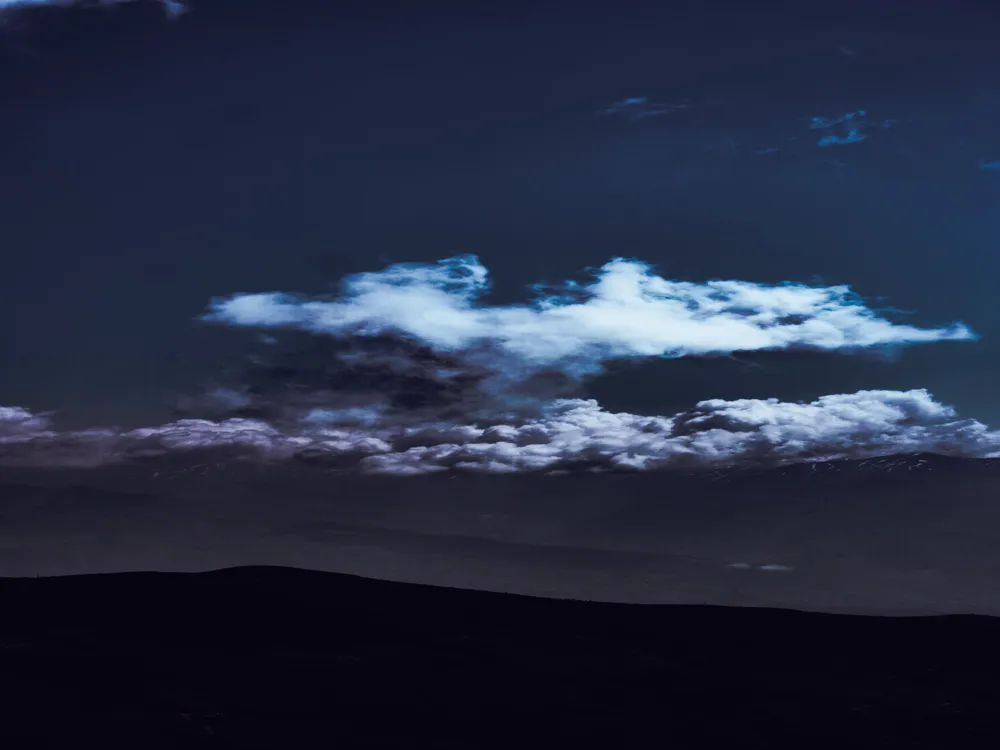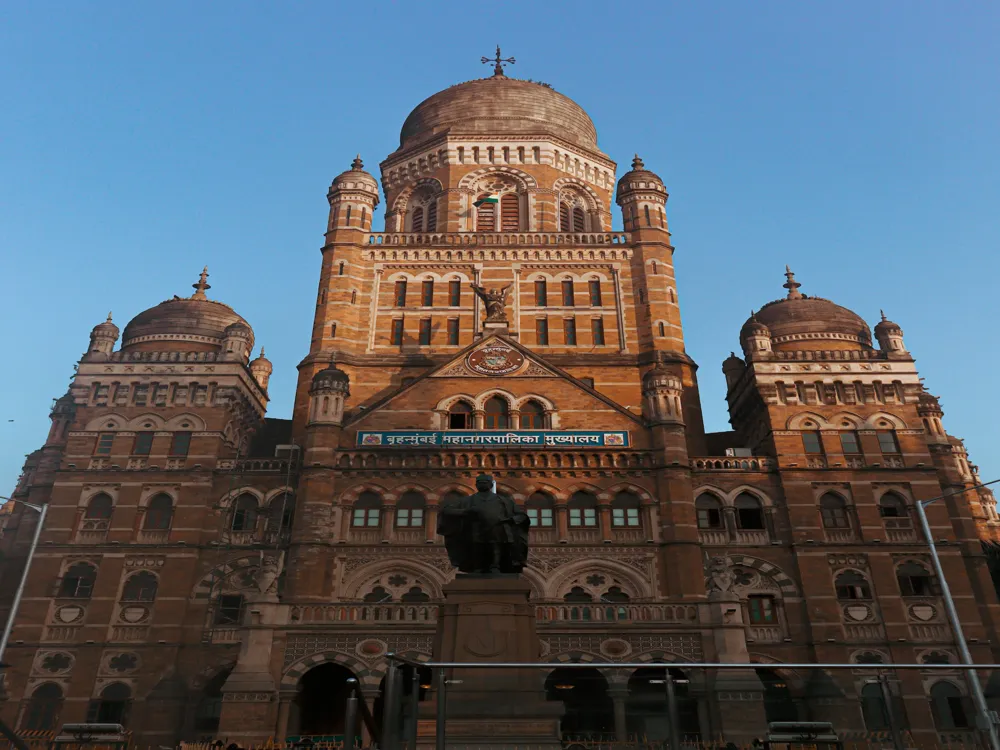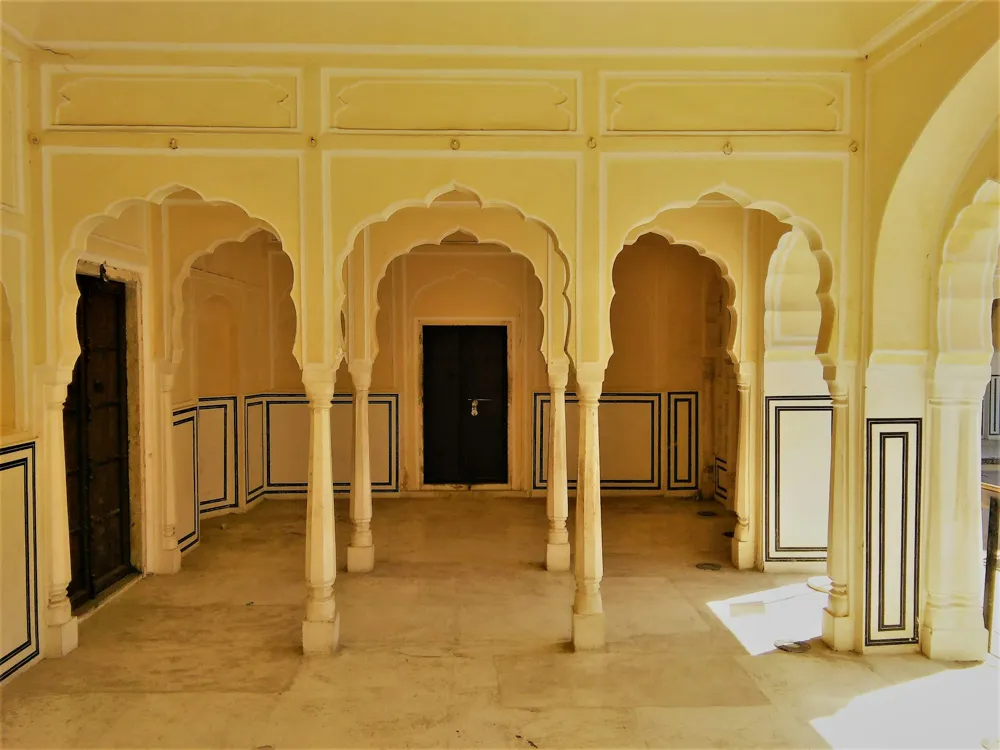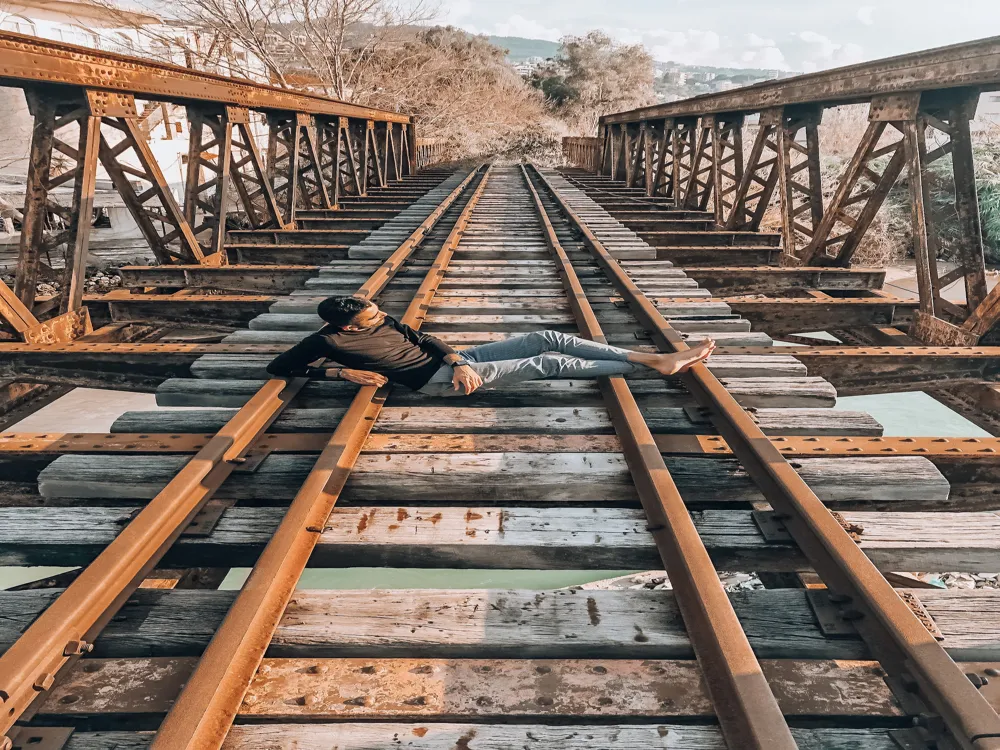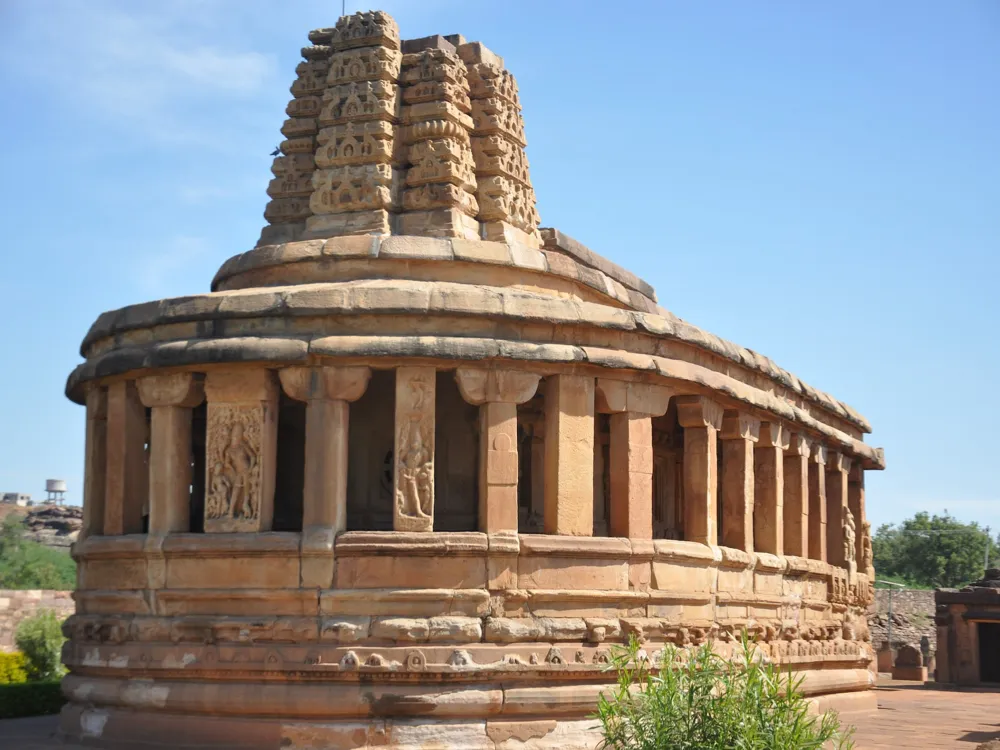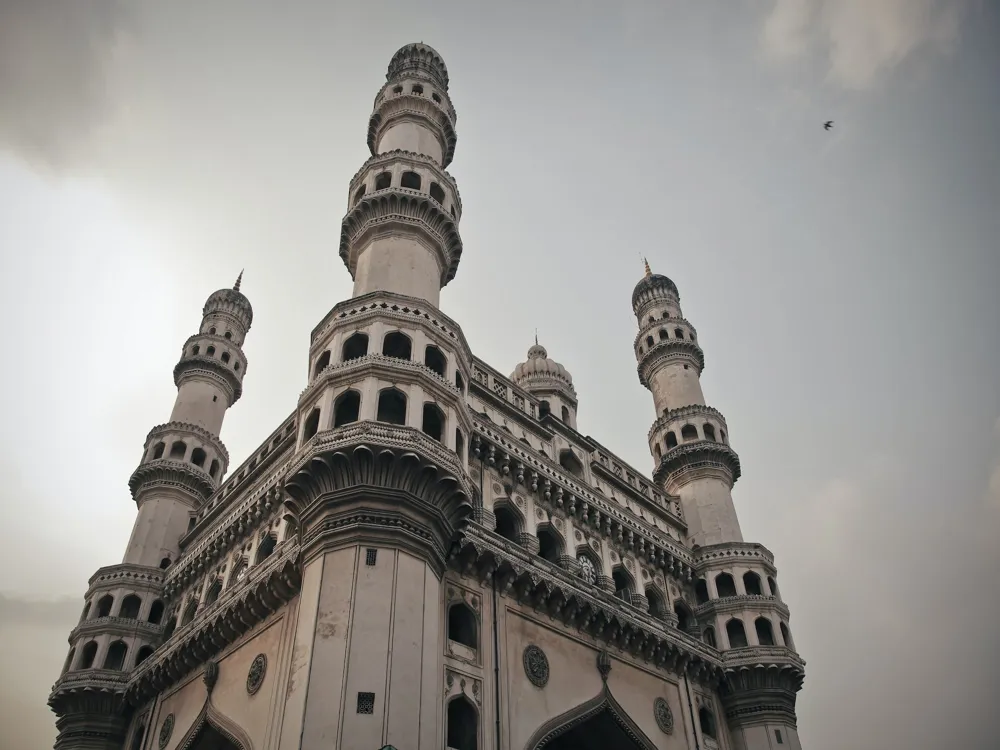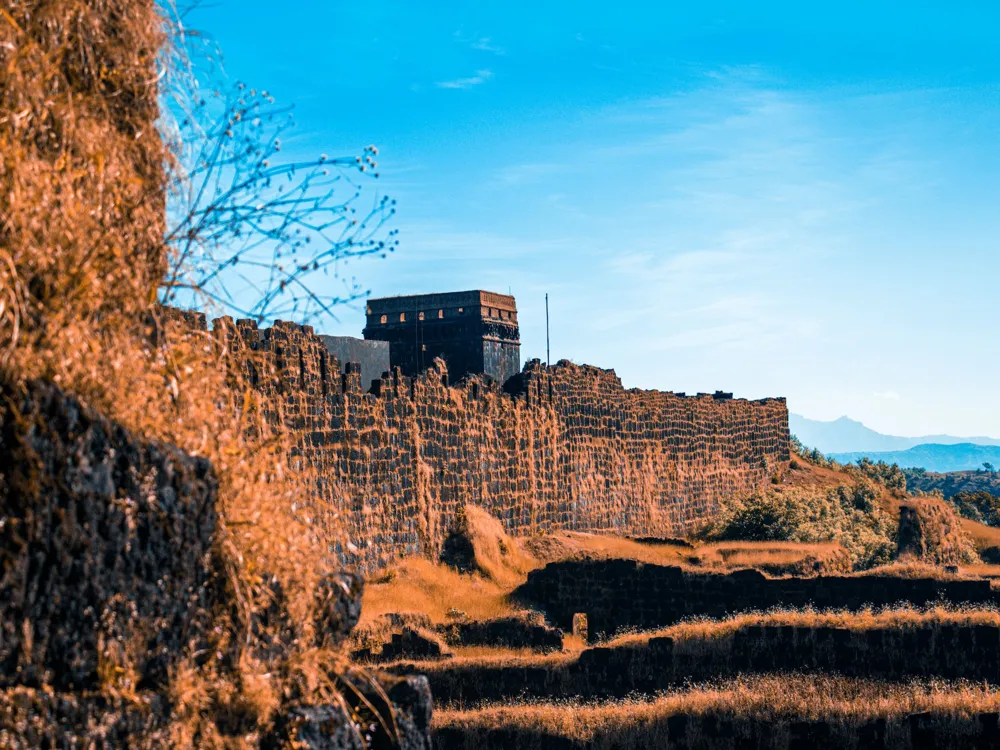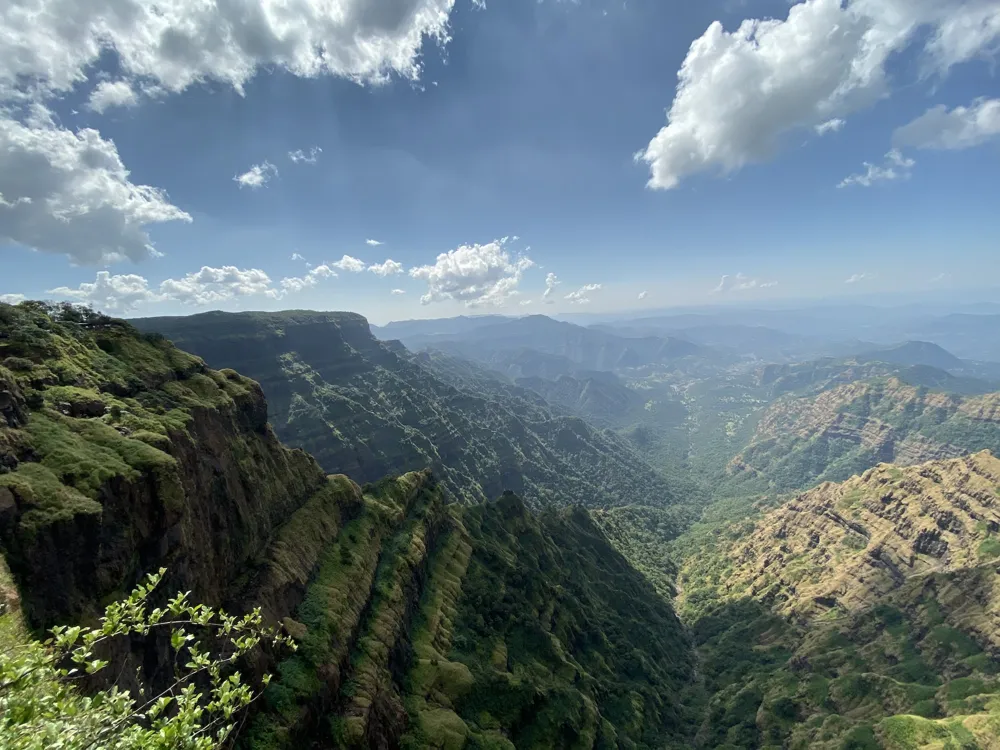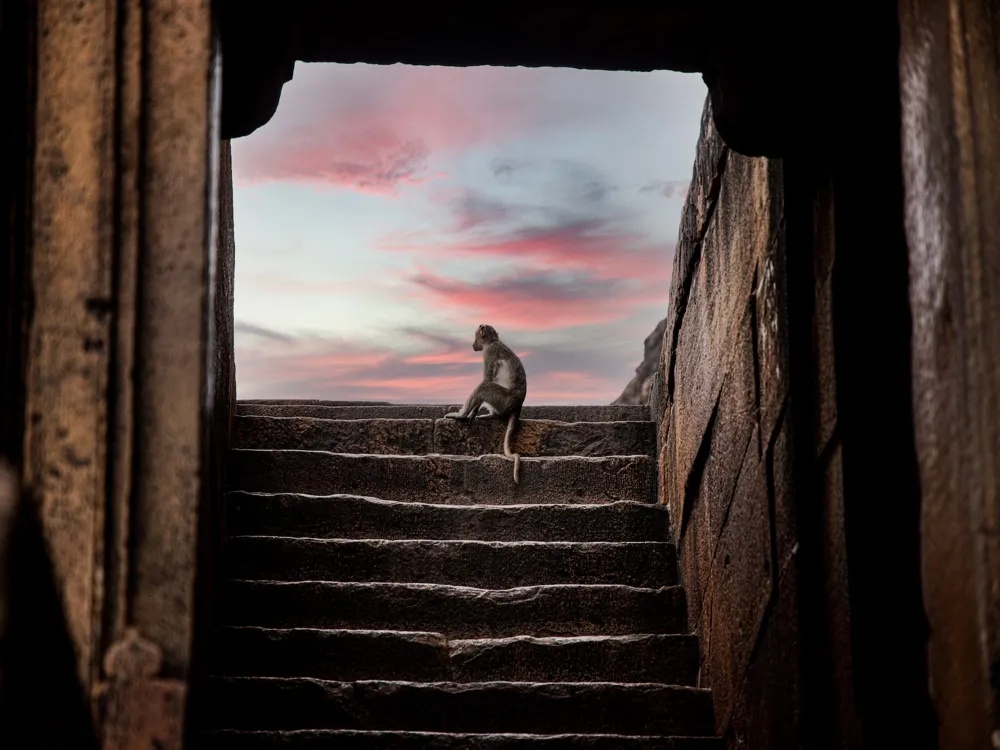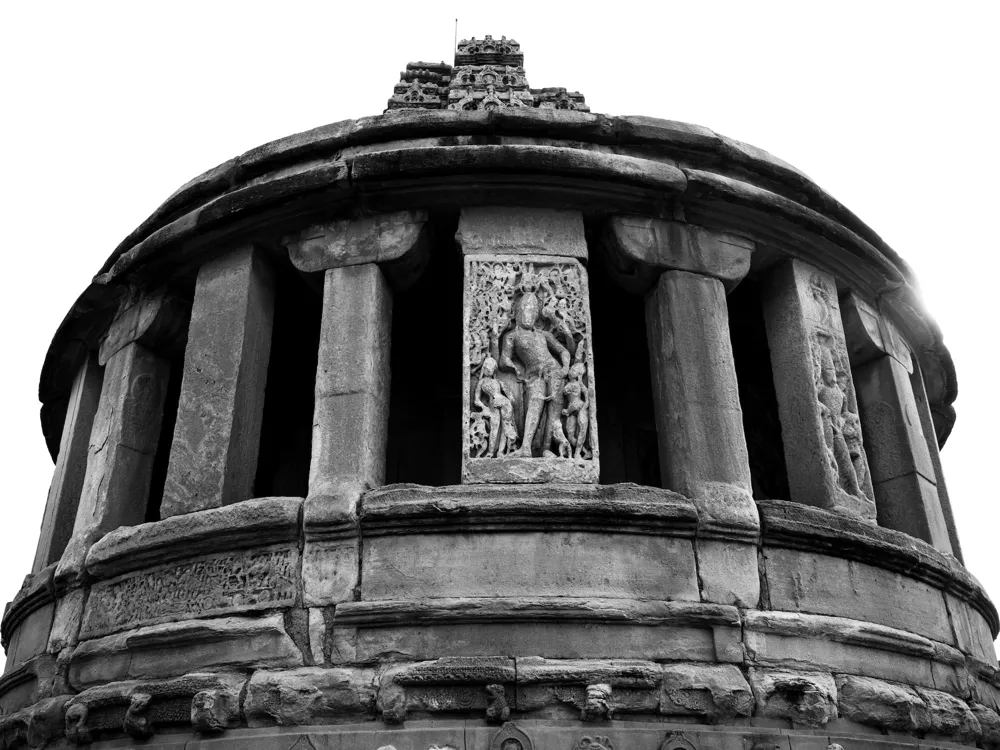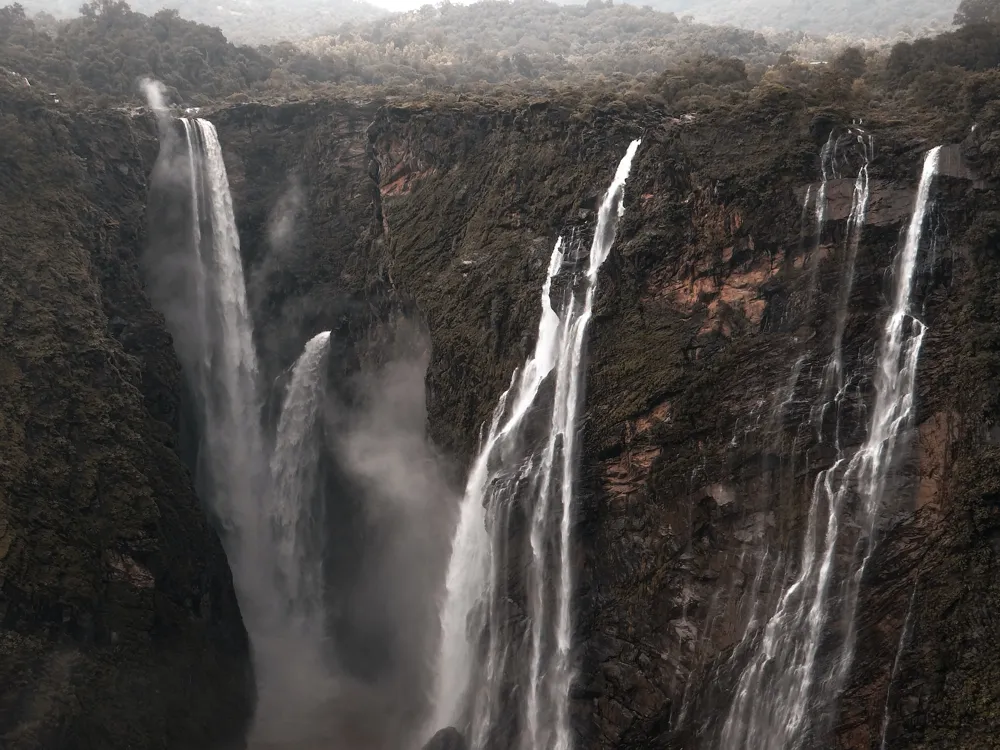The Ibrahim Rauza, a splendid architectural marvel in Bijapur, Karnataka, is a testament to the rich cultural and historical heritage of India. Constructed in the late 16th century under the patronage of Ibrahim Adil Shah II, this mausoleum complex is a striking example of Islamic architecture with a distinctive Deccan influence. Renowned for its balanced proportions, intricate carvings, and elegant design, Ibrahim Rauza is not just a mausoleum but a symbol of love and respect, as it houses the tombs of Ibrahim Adil Shah II and his queen, Taj Sultana. This historic edifice is often referred to as the 'Taj Mahal of the South' and has inspired architects and historians alike. Its layout includes a central tomb chamber, a mosque, a large courtyard, and gateways, all adorned with exquisite carvings and calligraphy. The mausoleum's dome, an engineering marvel, is mounted on a highly sophisticated system of interlocking arches and piers, showcasing the advanced architectural techniques of the era. The serene ambience of Ibrahim Rauza, coupled with its stunning aesthetics, makes it a must-visit destination for anyone interested in history, architecture, or the cultural diversity of India. Its verdant gardens and the symmetrical arrangement of its structures offer a tranquil and mesmerizing experience. As a UNESCO World Heritage Site nominee, Ibrahim Rauza not only marks the zenith of Islamic architecture in the Deccan but also stands as a beacon of the region's glorious past. The architecture of Ibrahim Rauza is a fascinating blend of Persian and Indian styles, exemplifying the syncretic cultural ethos of the Deccan region. The complex is divided into two main structures – the mausoleum and the mosque, which stand opposite each other, separated by a beautifully landscaped garden. The buildings are mounted on a single, elevated platform, creating an impression of floating structures. The mausoleum, with its twin domes, is a harmonious blend of geometric patterns and floral motifs. The walls and ceilings are adorned with intricate latticework, allowing light to filter through and create an ethereal ambiance inside. The use of jali work (stone lattices) is a notable feature, providing both aesthetic appeal and functional ventilation. The mosque, on the other hand, is an architectural gem in its own right. Its façade is punctuated with arches and minarets, each exquisitely carved with verses from the Quran and various geometric patterns. The interior of the mosque is spacious, with high ceilings and a large prayer hall, designed to accommodate numerous worshippers. The mihrab (prayer niche) is particularly noteworthy for its artistic excellence. The entire complex is built using a unique blend of granite and basalt, materials that have withstood the test of time. The craftsmanship evident in the stone carvings, the balance in the structural composition, and the overall symmetry of the complex make Ibrahim Rauza an outstanding example of Deccan Sultanate architecture. The ideal time to visit Ibrahim Rauza is from October to March, during the cooler months, when the climate is pleasant and conducive for exploration. Visitors are encouraged to dress modestly and maintain the sanctity of the mausoleum and mosque. Photography is allowed, but it's advisable to avoid flash inside the tomb. Opting for a guided tour can enrich your experience, as local guides provide detailed insights into the history and architecture of the complex. The complex is accessible to all visitors. Basic facilities like restrooms and drinking water are available, but it's advisable to carry your own water and snacks. Ibrahim Rauza is located in Bijapur, Karnataka, and is easily accessible by various means of transport. The nearest airport is Belgaum Airport, about 205 kilometers away. Bijapur is well-connected by rail and road, with regular trains and buses from major cities like Bangalore, Mumbai, and Hyderabad. Once in Bijapur, one can hire taxis or auto-rickshaws to reach the monument, which is situated within the city limits and is a prominent landmark. Read More:Overview of Ibrahim Rauza, Bijapur
Architecture of Ibrahim Rauza
Tips When Visiting Ibrahim Rauza
Best Time to Visit
Respecting the Site
Guided Tours
Accessibility and Facilities
How To Reach Ibrahim Rauza
Ibrahim Rauza
Bijapur
Karnataka
NaN onwards
View bijapur Packages
Weather :
Label : Must Visit
Tags : Monument
Timings : 6:00 AM to 6:00 PM
Entry Fee : Indians & SAARC nationals: INR 5
Below 15 Years: Free
Foreign Nationals: INR 100
Planning a Trip? Ask Your Question
Bijapur Travel Packages
View All Packages For Bijapur
Top Hotel Collections for Bijapur

Private Pool

Luxury Hotels

5-Star Hotels

Pet Friendly
Top Hotels Near Bijapur
Other Top Ranking Places In Bijapur
View All Places To Visit In bijapur
View bijapur Packages
Weather :
Label : Must Visit
Tags : Monument
Timings : 6:00 AM to 6:00 PM
Entry Fee : Indians & SAARC nationals: INR 5
Below 15 Years: Free
Foreign Nationals: INR 100
Planning a Trip? Ask Your Question
Bijapur Travel Packages
View All Packages For Bijapur
Top Hotel Collections for Bijapur

Private Pool

Luxury Hotels

5-Star Hotels

Pet Friendly







